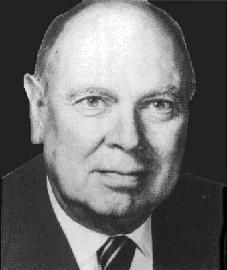Robert Gagné was an American educational psychologist renowned for his insights into the psyche of learning and his advancements in the instructional design and technology field. While his later work continued to plumb unexplored ground in the newer worlds of computer- and multimedia-based learning environments, his original, ground-breaking work on instruction is still regarded as required reading for anyone learning to teach.

Here then are Robert Gagne’s nine general steps of instruction:
Gain the Student’s Attention – While most teachers will admit that this task is easier said than done, they recognize that it is the most fundamental of requirements for teaching a class. Whether you introduce an intriguing problem, present a new situation or merely ask a question, you must engage your audience.
Describe the Goal – By stating where the lesson is headed, you imbue the class with a sense of purpose. This goal is as important in a room of CEOs as it is in a group of preschoolers. Without a goal, the lesson loses focus andframe of reference and much valuable information will be lost because it cannot be integrated into the whole of the lesson plan.
Recall Relevant Prior Knowledge – Providing the aforementioned framework for the current lesson is key to allowing the students to assimilate the information in a fast and efficient manner. A simple reminder of how the new facts will interact with the new is a powerful way to build rapport and a sense of involvement in the class.
Present the Material – Obviously, there is a certain amount of rote memory involved in any learning exercise but the use of graphics, sounds, pictures and videos can significantly expedite the matter. Providing your students with memory aids is one of the most powerful tools available to an educator.
Guide the Learning Process – Another of Gagné’s particular insights into the teaching process was in the use of examples. Seemingly obvious, the professor stressed the need for the teacher himself to work through an illustrative problem rather than just provide them on paper. Students could then frame questions at the exact point where problems and misunderstandings occurred.
Require Practice – The simplest application of this principle is let the student apply his knowledge. Use practice testsapplied problems or even role-playing to reinforce the lesson. Then, do it again. It has been proven to make a difference in how well and how long students retain information.
Provide Feedback – Positive reinforcement works well on any learning group. Still, it is the instructor’s duty to correct incorrect analysis or deficient performance. A good strategy is to allow all students to present their findings concerning a particular problem and then provide a step-by-step solution of the problem. The broad nature of the response eliminates any hurt feelings on an individual level.
Test – Surely, you didn’t think that there would be a test. Many of your students may think so also. Nevertheless, it is imperative to make this assessment, not just to assess your student’s success, but your own. Testing is the one thing that your students should count on; Gagne would say that it is the prime motivator in their learning experience.
Enhance Retention – Not merely as an afterthought but as a reinforcement tool, students should be provided with similar situations, and additional problem situations that will take advantage of their newly acquired knowledge. After all, practice makes perfect.
What is Gagné's Theory of Instruction?

